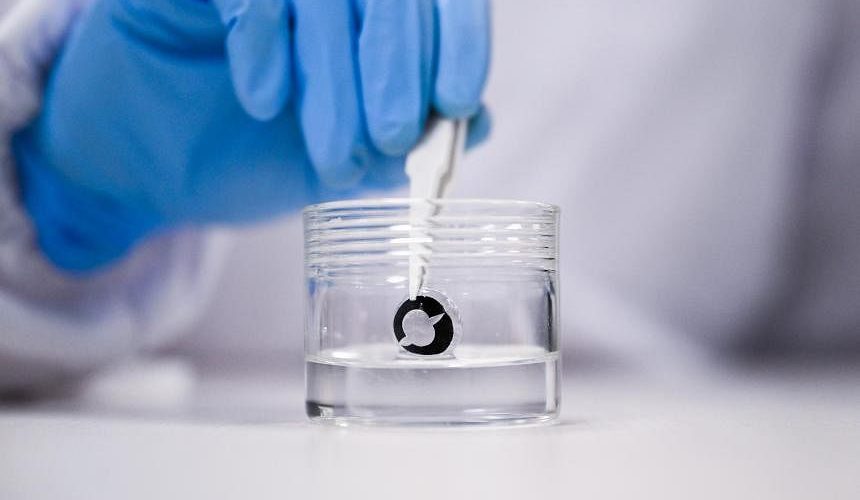
Singapore Scientists Develop Saline-Powered Battery for Smart Contact Lenses
High-tech contact lenses that can film footage and display information to the wearer have long been a fascination, as seen in movies like Mission Impossible and the Netflix series Black Mirror. Now, scientists from Nanyang Technological University (NTU) have made a breakthrough in the pursuit of smart contact lenses with the development of a saline-powered battery.
The NTU team has created a flexible battery, as thin as a human cornea, that stores electricity when immersed in a special saline solution. Associate Professor Lee Seok Woo, from NTU’s School of Electrical and Electronic Engineering, explained that the battery cells are coated with glucose, which reacts with the sodium and chloride ions in the saline solution to generate an electric charge.
Similar technology is already used in batteries for wearables, powered by human perspiration. The contact lens battery can also receive an hour’s worth of additional power while being worn, as these ions are also present in the liquid layer of a person’s eyes.
To ensure that vision is not obstructed, the battery is embedded along the sides of a soft lens. Early tests have shown promising results, with the battery able to power a smart lens and continuously send a signal to a smartphone via Bluetooth for 12 hours. The battery can be charged up to 200 times, and efforts are underway to further improve its performance.
The design of this battery overcomes key challenges in the development of smart lenses, such as weight and circuitry, making it suitable for daily wear in the future. Moreover, the absence of metals in the battery and its reliance on glucose and water to generate electricity make the lens safe to wear. The lens has been tested on mammal cells, showing no deterioration or harm, indicating its biocompatibility.
However, it will still be years before the lens can be tested on humans. Prof Lee emphasized the need for multiple safety checks to ensure the delicate nature of the eye is protected. The research team has filed a patent through NTU’s innovation and enterprise arm, NTUitive, and is actively working towards commercializing this invention.

